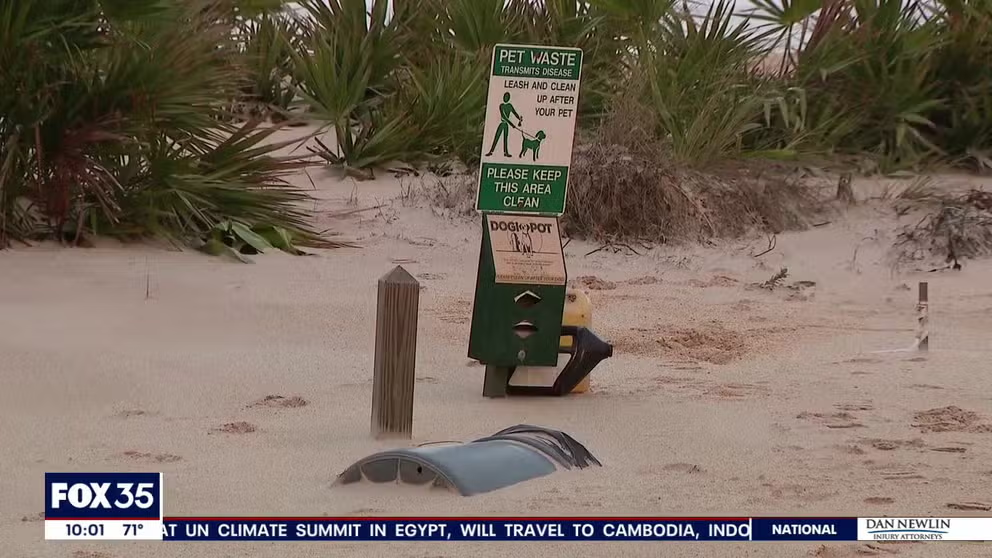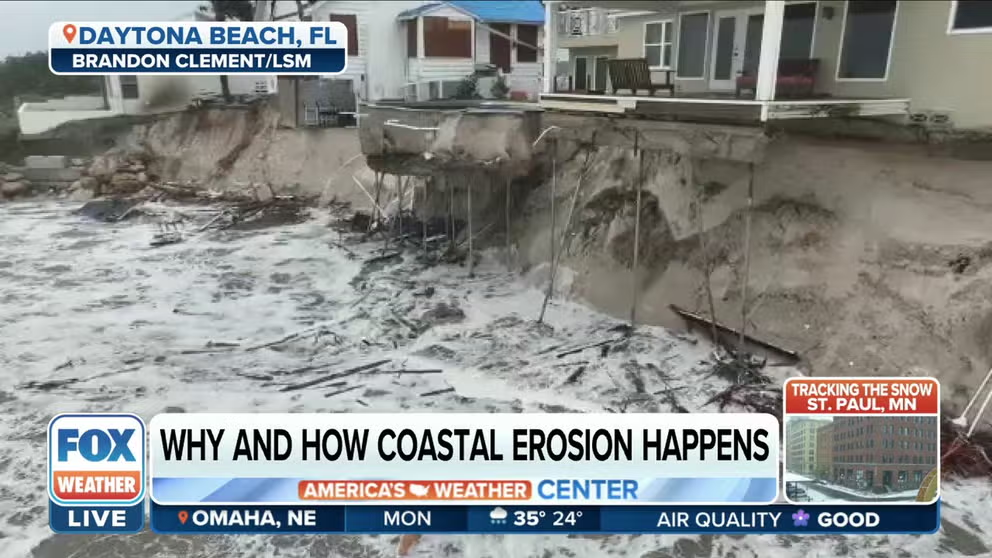Hurricanes erode beaches but where does all that sand go?
Video from Hurricane Nicole shows just how it happens. Energetic waves during storms hit beaches and carry the sand offshore, along the shore and further onshore.
Nicole buries Florida homes in feet of sand
Hurricane Nicole eroded mile after mile of sand dunes and beach under seaside homes. Some homeowners in Flagler County, Florida know exactly where that sand went.
Shocking video from 2022 showed Hurricane Nicole flattening dunes and washing foundations out from under homes. Apartments, pools, and houses crumbled into the Atlantic, but where did all of that sand go?
SEVERAL DAMAGED HOMES DANGLE PRECARIOUSLY ALONG WASHED OUT FLORIDA BLUFF FROM NICOLE
Why do hurricanes erode the beaches?
Meteorologist Kendall Smith shows some of the erosion that ate away beaches during Hurricanes Ian and Nicole and explains why it happens.
Homeowners just 40 miles to the north know exactly where the sand went. Feet of it buried homes, pools and streets in Flagler County, Florida. Drone video shows the streets buried under 4 feet of sand, mailboxes barely peek out, hot tubs filled in, and homes' ground floors were reduced to half floors.
SEE THE DEVASTATING DAMAGE NICOLE LEFT BEHIND IN FLORIDA'S RARE NOVEMBER HURRICANE STRIKE
So many residents told FOX Weather that dunes that protected their homes from high water and waves disappeared in the hours before Nicole made landfall. Energetic waves riding high on the storm surge pulled the sediment from the dunes and upper part of the beach, according to the University of Plymouth.
‘UNBELIEVABLE': HURRICANE NICOLE SUCKED WILBUR-BY-THE-SEA HOMES AWAY LIKE TISSUE PAPER
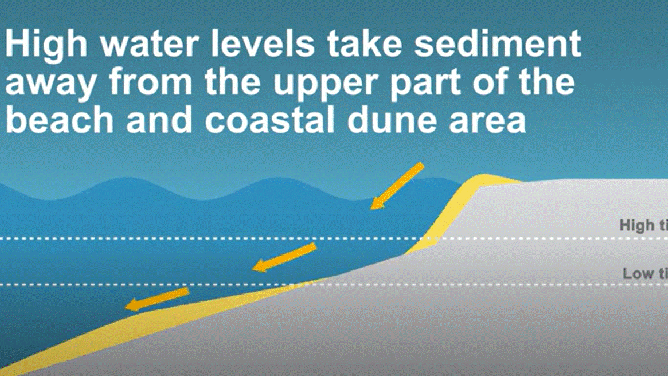
High water levels during storms take sediment away from dunes and upper levels of the beach where the waves hit.
(University of Plymouth / FOX Weather)
Sometimes the action will take the sand offshore to form a nearshore sandbar. As we saw from Daytona Beach and Flagler County beach video, the sand was transferred northward.
Waves hitting the coast at an angle formed a current along the beach. The waves hit from southwest to northeast and set up a northerly current which transferred the sand.
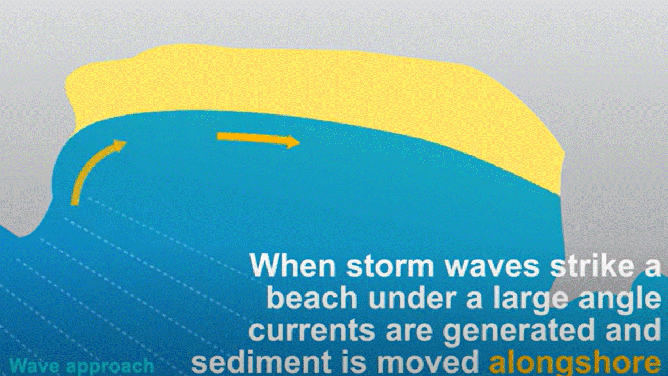
These angled waves generate a left to right current along the coast.
(University of Plymouth / FOX Weather)
On beaches without dunes, the high water carries the sand over the beach and deposits it higher up on the beach, further inland.
WATCH FORMER HURRICANE FIONA WASH HOMES INTO THE SEA IN CANADA
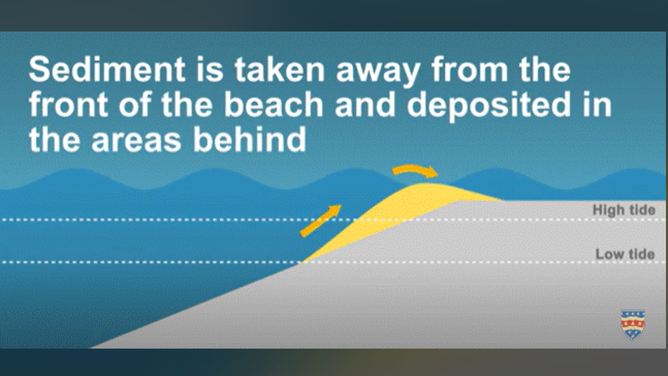
Sand on beaches without dunes will deposit further inland.
(University of Plymouth / FOX Weather)
"Geologically, hurricanes accelerate coastal processes so that during the hours of storm passage, the amount of erosion and deposition in coastal systems equals what would normally take months or even years," states the National Park Service.
Fair-weather wind and wave activity will eventually carry the eroded sand back to the beach. Beach recovery takes months or years, though, because the lower energy waves don't carry as much sediment.
Several towns in Florida aren't waiting for Mother Nature to give back what it took away. Florida Department of Transportation crews brought truck after truck of new sand to re-nourish the beach and dunes.
HOW TO WATCH FOX WEATHER ON TV
Flagler County officials say they want to build back up the protective features to prevent further damage from inevitable winter storms.
Re-nourishment costs are on the rise. A study of the Florida Panhandle estimated costs in the 1990s to be $5 million a year and $10 million a year in the 2000s. The Florida International University research calculates the costs to be $72 million a year by the end of the century, depending on sea level rise due to climate change.
